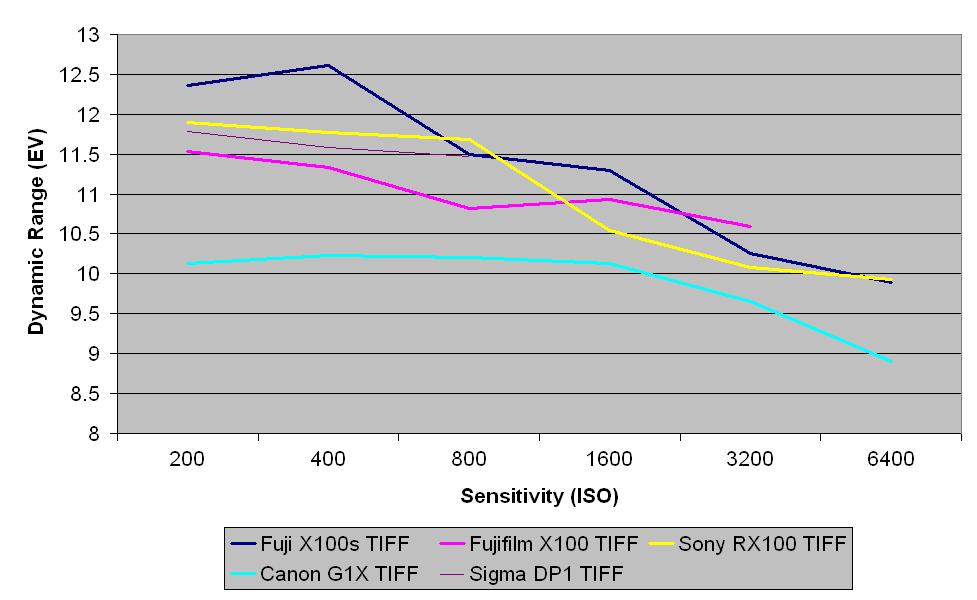Why you can trust TechRadar
We shoot a specially designed chart in carefully controlled conditions and the resulting images are analysed using DXO Analyzer software to generate the data to produce the graphs below.
A high signal to noise ratio (SNR) indicates a cleaner and better quality image.
For more more details on how to interpret our test data, check out our full explanation of our noise and dynamic range tests.
Here we compare the Fuji X100S with the Canon G1 X, Fuji X100, Sigma DP1 and Sony RX100.
JPEG signal to noise ratio

These results show that JPEG images from the Fuji X100S have a high signal to noise ratio, outperforming rival cameras the Fuji X100 and Sigma DP1 at every sensitivity setting. The X100S also betters the Canon G1 X and Sony RX100 at every setting but ISO1600-3200, where the three are very closely matched. At ISO 6400 the X100S and Sony again show very similar signal to noise ratios in their JPEG images.
Raw signal to noise ratio

TIFF images (after conversion from raw) from the Fuji X100S show a stronger signal to noise ratio than those from the Sigma DP1 at every sensitivity setting, while they are also stronger than those from the Sony RX100 at ISO 200-800, and stronger than the Canon G1 X at ISO 200-400. The Fuji X100's TIFF images beat those from the X100S for signal to noise ratio at every sensitivity setting.
JPEG dynamic range

The Fuji X100S's JPEG results for dynamic range are less impressive than those for signal to noise ratio, with the camera sitting below the Sony RX100 and Fuji X100 at every sensitivity setting, and below the Canon G1 X until ISO 6400-12800. The Fuji X100S shows less dynamic range in its JPEG images than the Sigma DP1 at ISO 100, but picks up to produce stronger results than the Sigma at every other ISO.
Sign up for breaking news, reviews, opinion, top tech deals, and more.
Raw dynamic range

Here we see that TIFF images (after conversion from raw) from the Fuji X100S start off with the highest dynamic range of all the cameras here, at lower sensitivities. At ISO 800, the X100S falls a little below the Sony RX100, to the same level as the Sigma DP1, before surging ahead to the lead again at ISO 1600. At ISO 3200 the X100S falls below the Fuji X100 but stays just above the Sony, finishing level with the Sony at the top of its ISO range, ISO 6400. TIFF images from the X100S show stronger dynamic range than those from the Canon G1 X at every sensitivity setting.
Current page: Noise and dynamic range
Prev Page Image quality and resolution Next Page Sample images